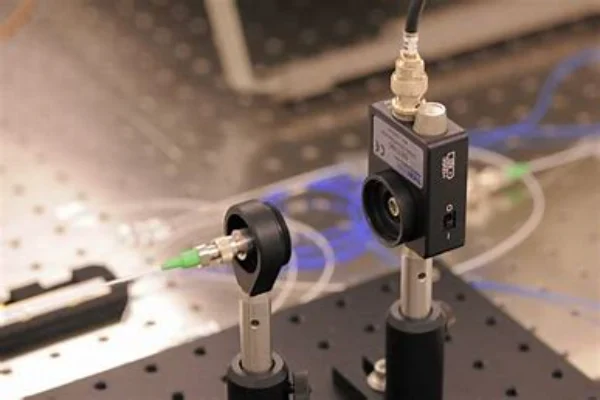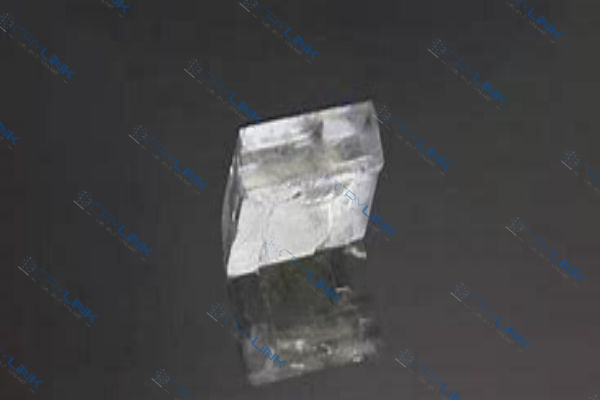Introduction to Laser Countermeasures in Modern Defense Systems
In the world of modern defense technology, laser countermeasures have emerged as a critical component in safeguarding against potential threats. These systems utilize high-powered lasers to detect, track, and neutralize incoming projectiles. The role of specific crystals, such as Potassium Dihydrogen Phosphate (KDP) and Potassium Titanyl Phosphate (KTP), is vital in these high-power laser systems. In this article, we will explore the various aspects of laser countermeasures and the essential role played by these crystals.

The Importance of Laser Countermeasures
The role of Potassium Dihydrogen Phosphate (KDP) and Potassium Titanyl Phosphate (KTP) in laser countermeasures is a testament to the convergence of physics, engineering, and strategic defense. These crystals, with their unique properties, have become the linchpin in the development of advanced laser systems that are redefining modern warfare.
The applications of KDP and KTP extend beyond mere targeting and neutralizing threats. They are instrumental in the development of laser-based sensors and scanners used for surveillance and intelligence gathering. The high damage resistance and broad transparency range of these crystals enable the creation of tools that provide real-time data and insights. This enhances situational awareness and decision-making in critical scenarios, allowing for more precise and effective responses.
Furthermore, the ongoing research and development in the field of laser technology are uncovering new potentials for KDP and KTP. Innovations in crystal growth techniques, phase-matching control, and integration with other materials are leading to even more efficient and versatile laser systems. These advancements are not only enhancing the capabilities of existing defense systems but also opening doors to new applications and solutions that were previously unimaginable.
Environmental considerations are also becoming increasingly important in the utilization of KDP and KTP. Ensuring that the extraction, processing, and disposal of these crystals align with sustainability principles is vital for the long-term success and acceptance of laser countermeasures. Research into eco-friendly alternatives and recycling methods is becoming an essential aspect of future developments, reflecting a growing awareness of the need to balance technological advancement with environmental stewardship.

The global impact and strategic implications of the advancements in laser countermeasures, driven by KDP and KTP, are profound. Nations equipped with these advanced systems can better protect their territories and interests, fostering stability and peace. The growing demand for these crystals in defense applications is also leading to economic opportunities, job creation, and technological leadership on the global stage. Industries related to crystal manufacturing, laser technology, and defense equipment are experiencing growth, translating into broader economic and strategic benefits.
In conclusion, the integration of Potassium Dihydrogen Phosphate (KDP) and Potassium Titanyl Phosphate (KTP) into laser countermeasures is more than a technological innovation. It’s a paradigm shift that is reshaping the landscape of modern defense. From enhancing the precision and efficiency of defense systems to driving economic growth and technological innovation, these crystals are at the heart of a new era in modern warfare.
Their continued exploration and integration will undoubtedly shape the future of defense technology, with implications that reach far beyond the battlefield, influencing global security, economic development, and technological progress.

Crystals in Laser Countermeasures
Potassium Dihydrogen Phosphate (KDP) in Laser Systems
Potassium Dihydrogen Phosphate (KDP) continues to be a subject of intense research and development, not only for its existing applications but also for its potential to unlock new frontiers in laser technology. Its role in laser countermeasures is a prime example of how a specific material, with its unique properties, can revolutionize an entire field.
The nonlinear optical properties of KDP, which make it suitable for frequency conversion, are being explored further to enhance its efficiency and versatility. Scientists and engineers are working on methods to optimize the phase-matching conditions within the crystal, allowing for more precise control over the generated wavelengths. This could lead to the development of laser systems that can be tailored for specific tasks, ranging from medical treatments to advanced military applications.
The high damage threshold of KDP is another area of interest. Research is underway to understand the underlying mechanisms that allow KDP to withstand intense laser beams without degradation. Insights from this research could lead to the development of new materials with similar or even superior properties, expanding the possibilities for high-power laser systems.
However, the challenges associated with KDP cannot be ignored. Its sensitivity to temperature is a significant limitation that requires careful consideration in system design. Innovations in temperature control and monitoring technologies are being developed to mitigate this issue, allowing for more robust and reliable laser systems.
The growth and fabrication of KDP crystals are also areas of ongoing research. Developing methods to produce high-quality KDP crystals with fewer imperfections is a priority. This not only improves the efficiency of the laser system but also reduces costs, making advanced laser technologies more accessible.
The economic and strategic implications of KDP’s role in laser countermeasures are also noteworthy. The demand for KDP is driving growth in related industries, creating jobs, and fostering technological leadership. Countries investing in research and development of KDP-based technologies are positioning themselves as leaders in the field of laser technology, with potential benefits that extend beyond defense applications.
In conclusion, Potassium Dihydrogen Phosphate (KDP) is more than just a component in laser systems; it’s a catalyst for innovation and progress in the field of laser technology. Its unique properties have already made significant contributions to laser countermeasures, and its potential is far from exhausted. The ongoing research, development, and exploration of KDP’s capabilities promise to lead to even more groundbreaking advancements.
Its role in shaping the future of laser technology, defense systems, and broader scientific and economic landscapes cannot be underestimated. The journey of understanding and harnessing KDP’s potential is an exciting path that holds the promise of transformative changes in the way we utilize lasers in various aspects of our lives

Potassium Titanyl Phosphate (KTP) in Laser Systems
Potassium Titanyl Phosphate (KTP) stands as another essential crystal in the realm of laser countermeasures. Its unique properties, including high damage resistance and a broad transparency range, have made it a preferred choice for various laser applications, ranging from medical procedures to military defense systems.
One of the standout advantages of KTP is its efficient frequency conversion. This property allows KTP to transform a laser beam of one frequency into another, enabling the generation of specific wavelengths required for targeted applications. This frequency conversion is not only efficient but also highly stable, making KTP a reliable choice for critical operations.
KTP’s robustness is another significant benefit. Unlike some other crystals, KTP exhibits a high tolerance to environmental conditions, such as humidity and temperature fluctuations. This makes it suitable for use in various settings, from controlled laboratory environments to harsh field conditions.
However, the utilization of KTP is not without challenges. One of the primary limitations is the phase-matching requirements. Phase-matching is a condition where the interacting waves in a nonlinear medium are in phase, maximizing the interaction and, consequently, the efficiency of the process. Achieving perfect phase-matching in KTP requires precise alignment and control, adding complexity to the system design and operation.
Additionally, KTP crystals must be carefully grown and fabricated to ensure their quality. Any defects or impurities can lead to losses in the system, necessitating stringent quality control measures.
In conclusion, Potassium Titanyl Phosphate (KTP) has proven to be a vital asset in laser countermeasures. Its unique properties and applications offer distinct advantages that contribute to the effectiveness and versatility of laser systems. While there are limitations to consider, the continued exploration and understanding of KTP’s potential will likely lead to further advancements and innovations in laser technology, reinforcing its essential role in modern laser applications.

Conclusion
The integration of crystals like KDP and KTP in laser countermeasures represents a convergence of science, technology, and strategic defense. Their unique properties have not only enabled the development of highly efficient and effective laser systems but have also opened new avenues for innovation and exploration. The ability to neutralize various threats with unprecedented precision underscores the transformative impact of these crystals on modern warfare.
As technology continues to evolve, the role of these crystals extends beyond mere applications in defense. They are becoming symbols of human ingenuity, collaboration, and the relentless pursuit of excellence. The exploration of KDP and KTP’s potential is a testament to our ability to harness the laws of nature for the greater good, safeguarding our security, and paving the way for a future where technology serves as a beacon of progress and prosperity.
FAQs
- What are laser countermeasures?
Laser countermeasures are defense systems that use lasers to detect and neutralize incoming threats. - Why are crystals like KDP and KTP important in laser countermeasures?
These crystals have specific properties that enhance the efficiency and effectiveness of laser systems. - What are the main applications of KDP in laser systems?
KDP is mainly used for frequency conversion in high-power laser systems. - How does KTP differ from KDP in laser applications?
While both are used in laser systems, KTP offers unique advantages such as efficient frequency conversion and robustness. - Are there any limitations to using these crystals in laser systems?
Yes, there are limitations such as temperature sensitivity for KDP and phase-matching requirements for KTP, which must be considered for optimal performance.







